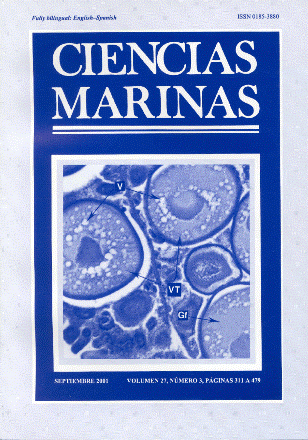Spatial patterns of the epipelagic species caught incidentally in the tuna fishery on floating objects, in the eastern Pacific Ocean
Main Article Content
Abstract
The spatial pattern of the fauna associated with floating objects in the eastern tropical Pacific (ETP) was analyzed. Different presence indexes for the groups of species caught incidentally in log sets were estimated, using information from the Inter-American Tropical Tuna Commission database (1993–1997). These indexes allowed a preliminary grouping of species in relation to the percentage of presence in the log sets on floating objects and to school type (solitary or schooling fish). They were then classified using quadratic discriminant functions, with diverse classification criteria: zone, annual period, groups of species and type of floating object. The models were based on several variance and covariance matrices. Three models were selected to classify the associated fauna, using the likelihood ratio test and the reduction observed in the error rates. The results show two zones in the ETP with different composition of groups of species and floating objects of different origin. The Equatorial Countercurrent, located around 4ºN, is the border between these zones. The northern zone presents an associated fauna dominated by adults and recruits of the silky shark (Carcharhinus falciformis) and of the blacktip shark (C. limbatus); by recruits of yellowfin tuna (Thunnus albacares); and, to a lesser extent, by yellowtail (Seriola lalandi). In the southern zone, the recruits of bigeye tuna (T. obesus) predominate. Both zones share fauna that is only found far from the coast, such as the whitetip shark (C. longimanus).
Downloads
Article Details
This is an open access article distributed under a Creative Commons Attribution 4.0 License, which allows you to share and adapt the work, as long as you give appropriate credit to the original author(s) and the source, provide a link to the Creative Commons license, and indicate if changes were made. Figures, tables and other elements in the article are included in the article’s CC BY 4.0 license, unless otherwise indicated. The journal title is protected by copyrights and not subject to this license. Full license deed can be viewed here.

